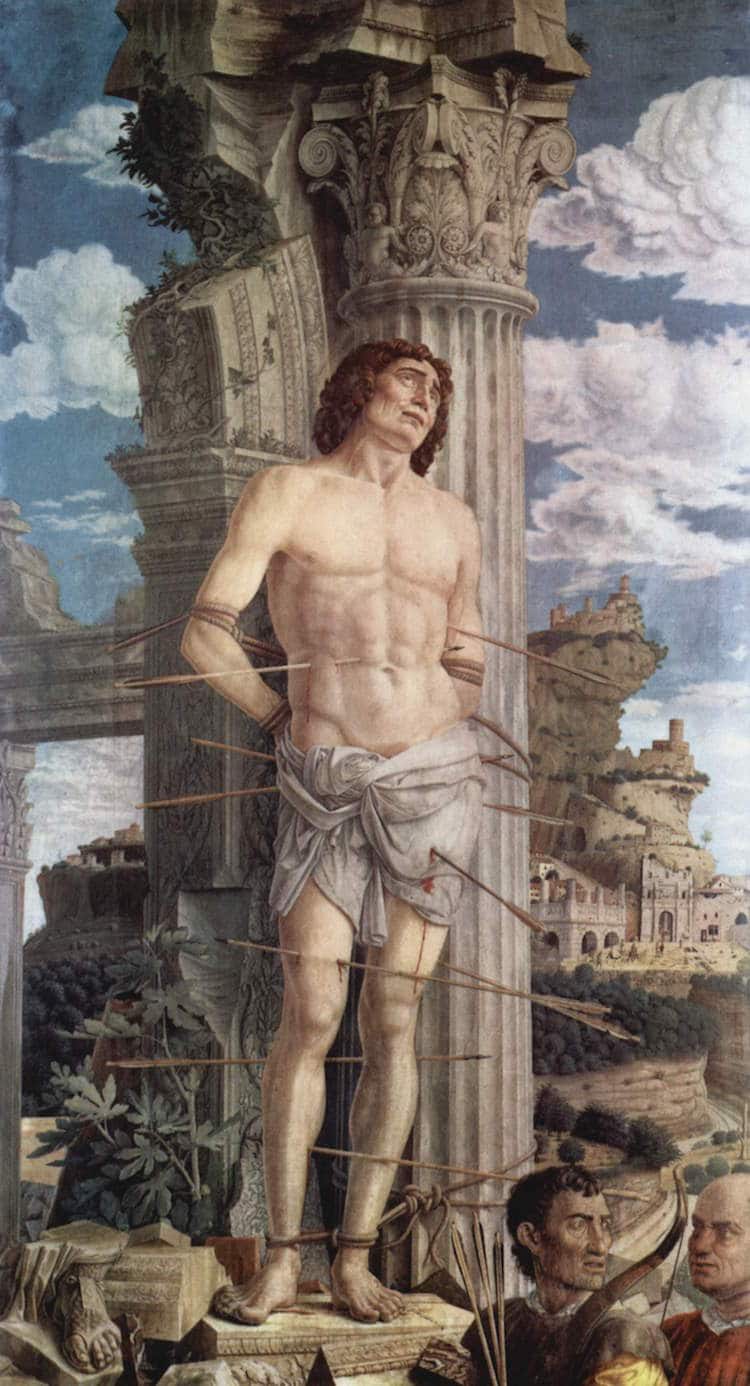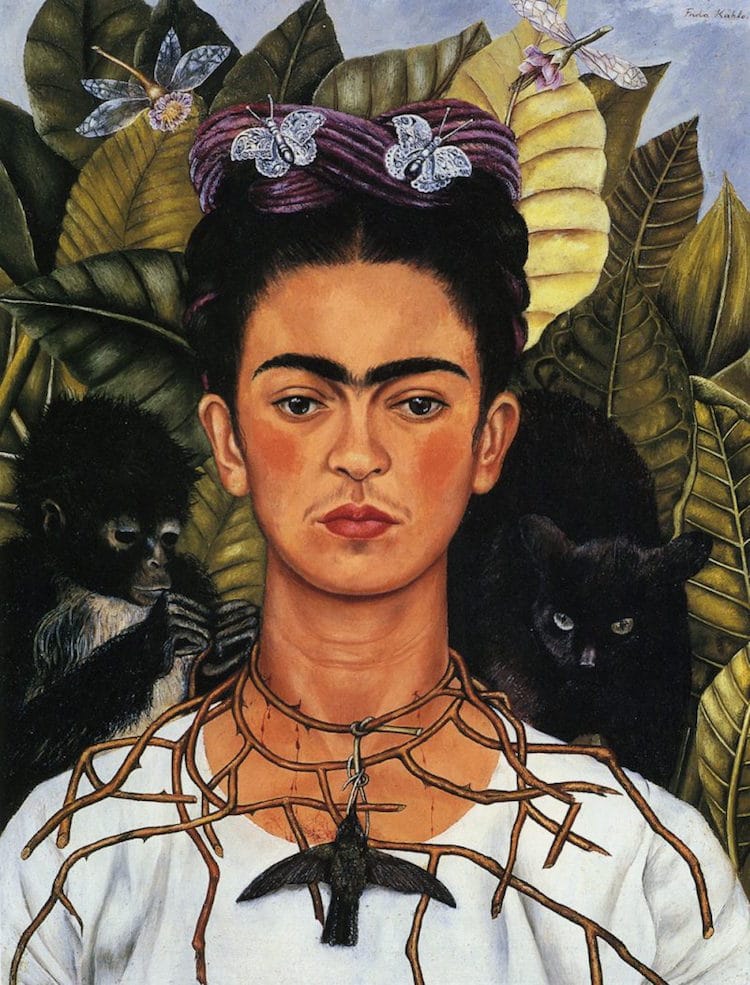Mexican painter Frida Kahlo is renowned for her symbolic subject matter, colorful canvases, and extensive series of self-portraits. Inspired by “whatever passes through [her] head without any other consideration,” her paintings are deeply personal. Given the intimate and emblematic nature of her pieces, their messages and motifs may seem too obscure to interpret. When viewed through a contextual lens, however, the meanings behind her poignant paintings begin to materialize.
Listen beautiful relax classics on our Youtube channel.
Kahlo expores several themes in her oeuvre, from an interest in her ancestry and heritage to her struggles with childlessness and femininity. Her most well-known paintings, however, seem to revolve around 2 major events in her life: her traumatic divorce from fellow artist Diego Rivera, and a nearly fatal accident she survived as a teenager. Here, we contextualize 5 of her most famous paintings in order to grasp the themes, thoughts, and emotions behind them.
Self-Portrait with Thorn Necklace and Hummingbird (1940)
Throughout the course of her career, Kahlo painted 55 portrayals of herself, including Self-Portrait with Thorn Necklace and Hummingbird. Today, this piece remains one of her most widely-recognized self-portraits, due to the moving context in which it was created and the symbolic nature of its imagery.
Kahlo completed this piece in 1940, one year after her tumultuous divorce from Mexican muralist Diego Rivera. Given the timing of its creation, Self-Portrait with Thorn Necklace and Hummingbird is widely believed to be a reflection of her emotional state following the couple’s split.
In the painting, Kahlo is positioned in front of foliage and between a stalking panther and a monkey. (She and Rivera had kept many monkeys as pets, leading many to speculate that they served as surrogates for the children the couple was tragically unable to conceive.) Around her neck she wears a necklace made out of thorns and adorned with a seemingly lifeless hummingbird. Though the peculiar accessory draws blood from her neck, her expression remains stoic. This calm approach to pain is typical of Kahlo, who—even when devastated over her divorce—poignantly stated that “at the end of the day, we can endure much more than we think we can.”

Frida Kahlo and Diego Rivera with Fulang Chang, one of their pet monkeys, in 1937. (Photographer unknown)
The Two Fridas (1939)

© 2007 Banco de México Diego Rivera & Frida Kahlo Museums Trust.
Like Self-Portrait with Thorn Necklace and Hummingbird, The Two Fridas was painted in response to Kahlo’s separation from Rivera. In this piece, Kahlo explores 2 sides of herself. On the left, she depicts herself as a broken-hearted woman clad in a traditionally European gown. On the right, her heart is whole, and she is wearing in modern Mexican dress—a style she adopted while married to Rivera.
As they share a bench, the two Fridas hold hands. This embrace, however, is not all that connects them; from their hearts sprouts a single vein, which branches out and wraps around their arms. On the left, Frida cuts the vein with surgical scissors, causing it to bleed. On the right, the vein leads to a tiny portrait of Rivera, clutched by Frida and nearly invisible to the unobservant eye.

‘The Two Fridas’ (Detail)

‘The Two Fridas’ (Detail)
This unique self-portrait likely represents the inner identity struggle faced by Kahlo as she dealt with her divorce. Though surreal in subject matter, Kahlo insisted that such iconography was rooted in real-life and, therefore, a direct reflection of her persona. “I never paint dreams or nightmares,” she explained. “I paint my own reality.”

Kahlo painting ‘The Two Fridays’ in 1939 (Photo: Nickolas Muray)
Self Portrait with Cropped Hair (1940)

© 2017 Banco de México Diego Rivera Frida Kahlo Museums Trust, Mexico, D.F. / Artists Rights Society (ARS), New York
Following her divorce, Kahlo sought to reinvent herself. In an act of defiance against her ex-husband, she painted Self Portrait with Cropped Hair.
Seated on a bright yellow chair with scissors in hand and locks of hair surrounding her, the artist is shown with a short haircut and clad in a man’s suit. Above her floats a pertinent lyric from a Mexican folk song. When translated, it reads: “Look, if I loved you it was because of your hair. Now that you are without hair, I don’t love you anymore.”
Clearly, Kahlo’s androgynous approach to her appearance in Self Portrait with Cropped Hair is a far cry from the long hair, flowing dresses, and feminine jewelry exhibited in most depictions of her. Fascinatingly, however, this is not the first time she has experimented with a masculine look. In photos of the artist as a child and teenager, it is apparent that she often wore suits—even when her female friends and family retained a more “feminine” appearance.
Listen beautiful relax classics on our Youtube channel.

Kahlo as a teenager.
The Broken Column (1944)

© Frida Kahlo/Museo Dolores Olmedo
“There have been two great accidents in my life. One was the train, the other was Diego. Diego was by far the worst.” In 1925, 18-year-old Kahlo was involved in a streetcar accident that left her with a broken spinal column, among many other major injuries. In the Broken Column, Kahlo presents a tragic glimpse into the lifelong effects of the accident.
The painting depicts Kahlo after spinal surgery. Nude except for a hospital sheet and a metal corset, her body is pierced with nails (perhaps as an allusion to Christian iconography of Christ on the cross)—and is shown split open. Visible in the crack that bisects her body is a crumbling Ionic column, which has replaced her spine and symbolizes her broken body. In the background, a barren landscape is similarly fissured, and a stormy sky looms overhead.
In 1929, Kahlo painted The Bus, a depiction that recalls what she had seen moments before the life altering accident.

‘The Bus’

Kahlo paints on her plaster corset while she recovers from spinal surgery years after her accident.
The Wounded Deer (1946)

© Banco de Mexico Diego Rivera & Frida Kahlo Museums Trust, Mexico, D.F. / Artists Rights Society (ARS), New York
Like The Broken Column, The Wounded Deer is a self-portrait that symbolically addresses the physical and emotional pain associated with her injuries.
In the piece, Kahlo has depicted herself as a deer—a choice perhaps inspired by her beloved pet, Granizo. Struck by arrows and positioned behind a broken branch (an object used in traditional Mexican funeral rites), it is clear that the deer is likely going to die. At the time of the painting’s creation, Kahlo’s health was in decline. In addition to failed corrective surgeries and the ongoing physical pain associated with her accident, she also suffered from gangrene and other illnesses.

Kahlo and Granizo, her pet deer, in 1939
(Photo: Nickolas Muray)
Furthermore, like The Broken Column, The Wounded Deer references Christian iconography. According to the bible, Saint Sebastian, an early Christian saint and martyr, was killed by an onslaught of arrows. His death has remained a popular subject in art for centuries, and likely inspired Kahlo’s choice of subject matter.

‘St. Sebastian’ (panel) by Andrea Mantagna (1480)
Sadly, Kahlo passed away in 1954. Thanks to her highly personal approach to art, however, her innermost emotions and admirable imagination are perpetually preserved in a captivating collection of works.
Related Articles:
Rare Photos of Frida Kahlo as a Young Woman in the 1920s
Art History Masterpieces Reimagined as Hand-Sewn Embroidery
Adorable Frida Kahlo Action Figure Features Iconic Unibrow and Detachable Heart
Iconic Artists Who Have Immortalized Themselves Through Famous Self-Portraits
The post Art History: The Stories and Symbolism Behind 5 of Frida Kahlo’s Most Well-Known Paintings appeared first on My Modern Met.
Source: mymodernmet.com


